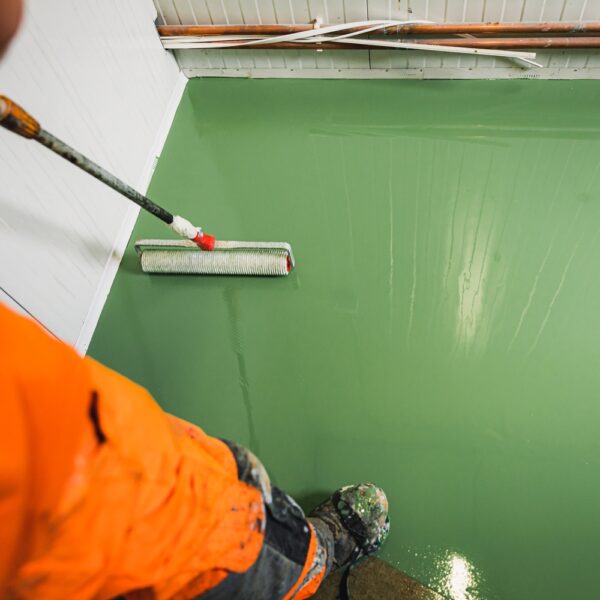How to Choose the Right Epoxy Pool Paint
When it comes to maintaining and enhancing the aesthetic appeal of your swimming pool, selecting the right pool paint is crucial. Epoxy pool paint stands out as a popular choice due to its durability, longevity, and resistance to various pool chemicals. However, choosing the right epoxy pool paint requires careful consideration of several factors to ensure optimal performance and appearance. This guide provides a comprehensive look at how to choose the right epoxy pool paint for your pool.

Understanding Epoxy Pool Paint
Epoxy pool paint is a two-part product consisting of a resin and a hardener. When mixed, these components undergo a chemical reaction that hardens the paint, forming a tough, resistant film on the pool surface. Epoxy paints are known for their excellent adhesion to surfaces, high resistance to water, chemicals, and UV rays, and enduring finish.
Key Factors to Consider
1. Surface Compatibility
Epoxy paint adheres well to various surfaces, including concrete, plaster, and fiberglass. Before applying epoxy paint, it is essential to ensure that the pool surface is compatible with epoxy. Epoxy paint is particularly effective on concrete and fiberglass surfaces, providing a smooth and resilient finish.
2. Preparation Requirements
Proper surface preparation is critical to the success of epoxy paint application. The pool surface must be clean, dry, and free from contaminants such as oils, algae, and previous paint layers. Depending on the surface condition, you may need to sandblast, acid wash, or use a degreaser to prepare the surface adequately. Investing time and effort in preparation ensures the epoxy paint adheres correctly and lasts longer.
3. Weather Conditions
The environmental conditions during application significantly affect the performance of epoxy paint. Ideal weather conditions include moderate temperatures (50-85°F) and low humidity. Extreme temperatures and high humidity can hinder the curing process, leading to poor adhesion and finish.
4. Durability and Chemical Resistance
Epoxy paint is known for its durability and resistance to pool chemicals, such as chlorine and algaecides. When choosing epoxy paint, consider the expected exposure to chemicals and the amount of wear and tear. A high-quality epoxy paint will withstand harsh conditions and maintain its appearance for years.
5. Color and Finish
Epoxy pool paints are available in various colors and finishes. While white and blue are traditional choices, many manufacturers offer a range of colors to suit different aesthetic preferences. Consider the pool environment and surrounding décor when choosing a color. Additionally, epoxy paint provides a glossy finish, which enhances the pool’s appearance and makes it easier to clean.
6. Application Process
The application process for epoxy paint can be labor-intensive and requires attention to detail. It typically involves applying multiple coats, with drying times between coats. Ensure you have the necessary tools and equipment, such as rollers, brushes, and safety gear. Some epoxy paints offer user-friendly formulations, reducing the complexity of the application process.
7. Cost and Budget
The cost of epoxy pool paint varies depending on the brand, quality, and quantity required. While epoxy paints are generally more expensive than other types of pool paints, their longevity and performance justify the investment. Consider your budget and the long-term benefits when choosing epoxy paint.
8. Manufacturer Reputation and Reviews
Research various brands and manufacturers to find a reputable provider of epoxy pool paint. Read customer reviews and ratings to gauge the product’s performance and reliability. A well-established manufacturer with positive feedback is likely to offer high-quality products and customer support.
Steps to Apply Epoxy Pool Paint
Step 1: Drain and Clean the Pool
– Drain the pool and remove any debris.
– Scrub the pool surface with a degreaser and acid wash to remove oils and contaminants.
– Rinse thoroughly and allow the pool to dry completely.
Step 2: Prepare the Surface
– Sand or sandblast the surface to create a rough texture for better adhesion.
– Patch any cracks or holes with an appropriate filler.
– Ensure the surface is clean, dry, and free from dust.
Step 3: Mix the Epoxy Paint
– Follow the manufacturer’s instructions to mix the resin and hardener.
– Mix thoroughly to ensure a consistent blend.
Step 4: Apply the Paint
– Use a roller or brush to apply the first coat of epoxy paint evenly.
– Allow the first coat to dry according to the manufacturer’s recommendations.
– Apply additional coats as needed, allowing adequate drying time between coats.
Step 5: Cure the Paint
– Allow the epoxy paint to cure completely before filling the pool with water. Curing times vary, so refer to the manufacturer’s guidelines.
Step 6: Refill and Maintain
– Once the paint is fully cured, refill the pool with water.
– Regularly maintain the pool to prolong the life of the epoxy paint.
Choosing the right epoxy pool paint involves careful consideration of various factors, including surface compatibility, preparation requirements, weather conditions, and budget. By following the steps outlined in this guide, you can achieve a durable and aesthetically pleasing finish that enhances the overall appeal of your pool. Investing in high-quality epoxy paint and proper application not only extends the life of your pool but also ensures a safe and enjoyable swimming experience.





